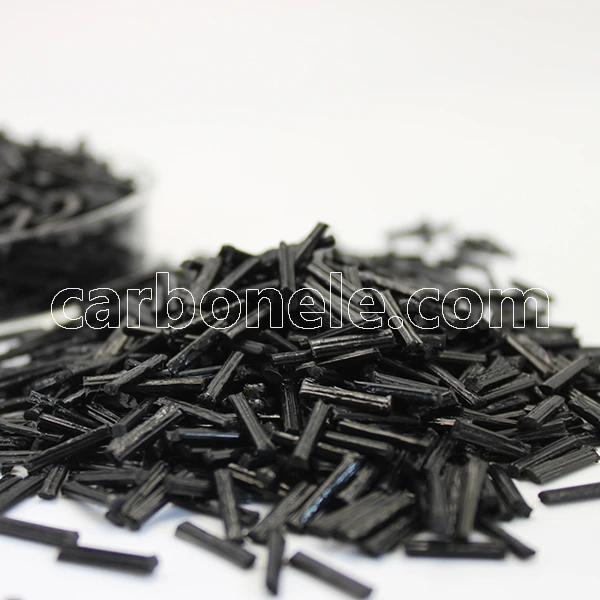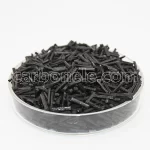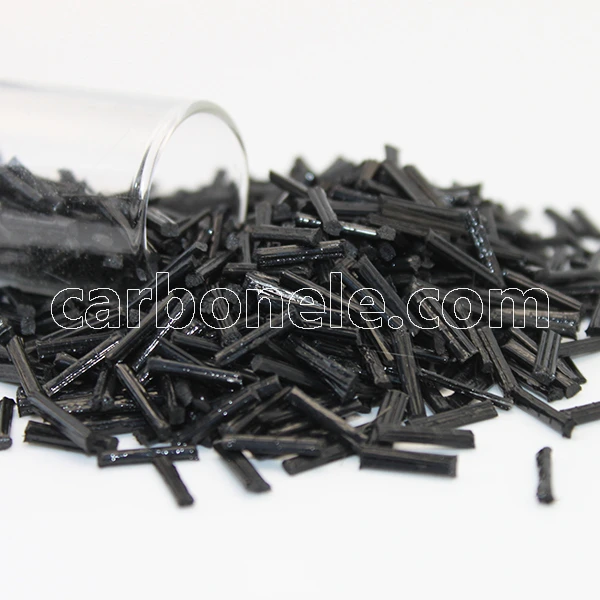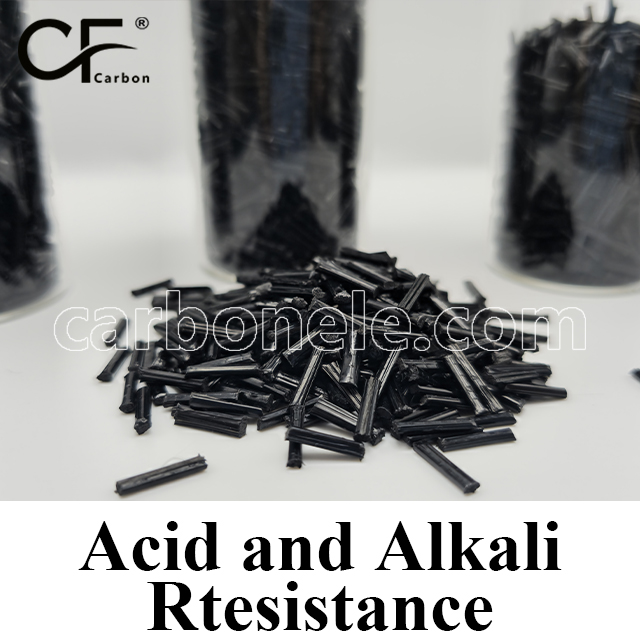
High Tensile Strength PA12 LCF40 for UAV Wings
PA12 LCF40 has become a highly regarded high-performance thermoplastic composite due to its excellent performance, outstanding physical properties, stable chemical properties, and wide application prospects.
- Manufacturer: Carbon New Material
- OEM/ODM: Acceptable
- Color: Black
- Free Samples: ≤25kgs
- MOQ: 100kgs
- Port: Xiamen
- Model No.: PA12-LCF-BCA4
PA12 LCF40: An Innovative Material Reshaping Drones and Multiple Fields
PA12 LCF40 is a high-performance thermoplastic composite. It presents the following remarkable merits:
I. Exceptional performance
1. Robust strength: Containing 40% long carbon fiber filling, it boasts extremely high strength. It can endure greater external forces without being damaged and performs splendidly in applications demanding high structural strength like drones. For instance, in the production of drone fuselages and wings, it can effectively resist airflow impacts and accidental collisions during flight, ensuring flight safety.
2. High firmness: It has relatively high hardness and is not easily scratched or worn down. This enables the components made from it to maintain good appearance and performance during use and prolong the service life of the product. Whether in daily use or in harsh environments, it can remain in a stable state.
3. Good tenacity: While having high strength, it also has certain toughness. It can absorb a certain amount of impact energy and prevent brittle fracture when subjected to instantaneous strong forces. This characteristic can play a buffering role when drones encounter unexpected situations such as collisions with obstacles, reducing damage to drones.
II. Excellent physical properties
1. Light in weight: It has a relatively low density and is a lightweight material. This is crucial for weight-sensitive application fields such as drones. It can reduce the overall weight and improve endurance and flight stability. Drones can stay in the air for a longer time and perform more tasks, expanding their application range.
2. Good dimensional stability: Under different temperature and humidity conditions, the dimensional change is small. This ensures that the products made from it have high precision and stability and reduces assembly problems and performance impacts caused by dimensional changes. Whether in hot deserts or cold polar regions, PA12 LCF40 can maintain a stable dimension and ensure that the performance of drones is not affected by the environment.
III. Stable chemical properties
1. Chemical resistance: It has good tolerance to various chemical substances and can maintain stable performance in different chemical environments. In some industrial applications, it can resist the erosion of substances such as oil, acid, and alkali. This enables drones to operate reliably in various complex working environments without worrying about damage to the material from chemical substances.
2. High temperature resistance: It has relatively high heat resistance and can still maintain its physical and mechanical properties in a certain high-temperature environment. This makes its application possible in some high-temperature working conditions, such as drone components near high-temperature areas such as engines. Even in high-temperature environments, PA12 LCF40% can maintain stable performance and ensure the normal operation of drones.
IV. Wide application scope
1. Drone field: It can be used to manufacture structural components such as drone fuselages and wings. While ensuring structural strength, it reduces the weight of drones and improves endurance and flight stability. In tasks such as reconnaissance and rescue, drones made of PA12 LCF40 material can better cope with complex environments and task requirements.
2. Other fields: In addition to the drone field, PA12 40%LCF can also be applied in fields such as automobiles, electronics and electrical appliances, and sports equipment. In the automotive field, it can be used to manufacture some parts such as engine peripherals and automotive piping systems. Its high temperature resistance and chemical corrosion resistance can adapt to the complex environment inside the car. In the field of electronics and electrical appliances, due to its good electrical insulation, it can be used to manufacture electrical parts and instruments. Its dimensional stability can also meet the requirements of precision electronic equipment. In the field of sports equipment, such as high-end bicycle parts, its strength and toughness can improve the durability and performance of equipment.
Smart Wings: The Performance Revolution of PA12 LCF40 in Drones
Making Flight Lighter
In the world of drone design, balancing weight and strength is like a dance—one misstep, and the rhythm is lost. PA12 LCF40, introduced by Carbon (Xiamen) New Material, redefines this rhythm. As a high-performance thermoplastic composite reinforced with 40% long carbon fibers, it not only reduces the drone’s weight but also grants the body exceptional impact resistance.
Dual Assurance of Strength and Durability
In the design of drone wings, PA12 LCF40 exhibits outstanding tensile strength, capable of withstanding forces up to 1600 MPa. This remarkable strength ensures that the wings remain stable during high-speed flight, preventing deformation of the drone’s body. Particularly in complex terrains and harsh weather conditions, PA12 LCF40%’s superior fatigue resistance extends the operational life of the drone by at least 30% compared to traditional materials.
Breakthrough in Precision Application
The drone industry demands materials that allow for more precise control and operation, especially in reconnaissance and rescue missions. Thanks to the low density and high rigidity of PA12 LCF40, drones exhibit enhanced maneuverability during flight, with sharper turns and faster response times. A successful mountain rescue operation stands as the best example. In the complex mountainous environment, this drone, made from PA12 LCF 40, navigated through narrow valleys with its lightweight yet robust body, ultimately delivering rescue supplies accurately to the target location.
PA12 LCF40 is more than just a material; it’s a performance revolutionizer for drones and the core of future aircraft design. This innovation from Carbon (Xiamen) New Material has elevated drone technology to new heights.
If you have any interest in this product, please feel free to contact us at any time by email or click here to send us an inquiry directly.
Further learn about long carbon fiber reinforced thermoplastics by watching videos, please visit our YouTube account. Thank you.
What's Carbon Fiber?
Carbon fiber models such as T300, T700, T800, etc. have tensile strength several times that of steel and can withstand extreme mechanical loads and impacts. The tensile strength of T800 carbon fiber is as high as 5800 MPa. When combined with thermoplastic resin, it can effectively improve the overall mechanical properties of the composite material, endowing it with higher load-bearing capacity and deformation resistance.

Frequently Asked Questions
Carbon (Xiamen) New Material Co., Ltd. aims to provide buyers with "one-stop" worry-free high-quality services. Here you can find all information about carbon fiber engineering plastics. If you still have questions, please send us an email for consultation!
-
How can I contact the manufacturer of a product that interests me?
When you find a product you are interested in, you can contact the manufacturer directly by sending an email and we will get back to you as soon as possible.
-
How do I find the products that interest me?
All you need to do is enter the keyword, product name in the search window and press the Enter key on your keyboard. Your search results page will then be displayed. You can also search within the product category pages on the home page. Each category is divided into subcategories, allowing you to refine your search and find products that interest you.
-
Where will I find a buying guide?
Please contact our after-sales service directly and we will provide you with a comprehensive operating guide.
-
What are CF Reinforced Thermoplastic Composites?
CF Reinforced Thermoplastic Composites are materials where carbon fibers are incorporated into a thermoplastic matrix. They combine the strength and stiffness of carbon fibers with the processability and recyclability of thermoplastics. For instance, they are used in automotive parts like bumper beams.
-
What are the benefits of CF Reinforced Thermoplastic Composites over traditional composites?
The key benefits include faster production cycles, easier recyclability, and better impact resistance. They also offer design flexibility. An example is in the manufacturing of consumer electronics casings where complex shapes can be achieved more easily.
-
How are CF Reinforced Thermoplastic Composites processed?
Common processing methods include injection molding, extrusion, and compression molding. Injection molding is widely used for mass production. For example, in the production of small components for the medical industry.
-
What industries use CF Reinforced Thermoplastic Composites?
They are utilized in aerospace, automotive, medical, and sports equipment industries. In aerospace, they can be found in interior components. In the medical field, they might be used in prosthetics.
-
How does the carbon fiber content affect the properties of the composites?
Higher carbon fiber content generally leads to increased strength and stiffness but may reduce ductility. A moderate content is often balanced for specific applications. For example, a higher content might be preferred in structural parts of a race car.
-
What are the challenges in using CF Reinforced Thermoplastic Composites?
Challenges include higher material costs, complex processing equipment requirements, and ensuring uniform fiber dispersion. Issues with adhesion between the fibers and the matrix can also arise. An example is in achieving consistent quality in large-scale production.
























